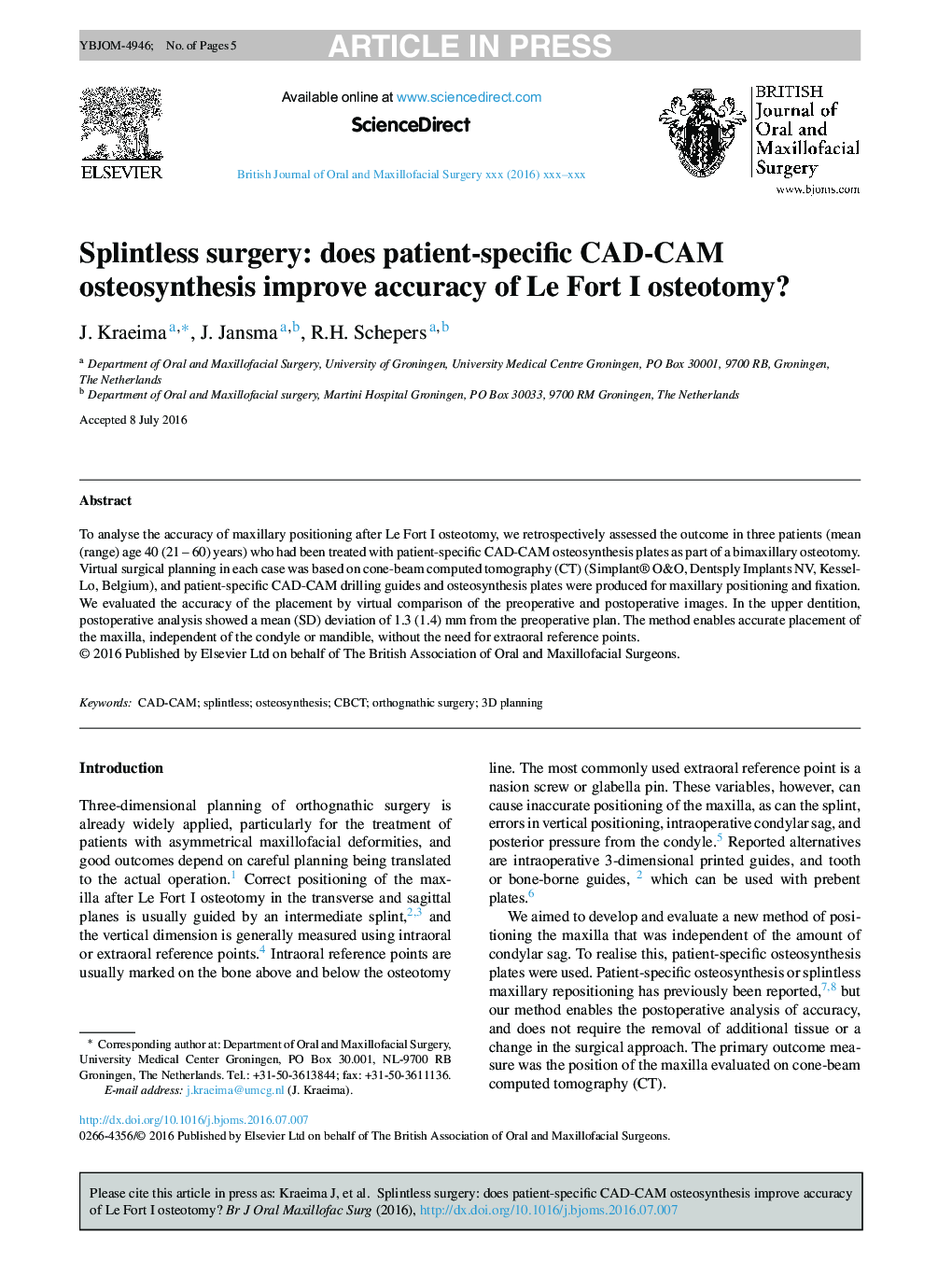| Article ID | Journal | Published Year | Pages | File Type |
|---|---|---|---|---|
| 5638515 | British Journal of Oral and Maxillofacial Surgery | 2016 | 5 Pages |
Abstract
To analyse the accuracy of maxillary positioning after Le Fort I osteotomy, we retrospectively assessed the outcome in three patients (mean (range) age 40 (21 - 60) years) who had been treated with patient-specific CAD-CAM osteosynthesis plates as part of a bimaxillary osteotomy. Virtual surgical planning in each case was based on cone-beam computed tomography (CT) (Simplant® O&O, Dentsply Implants NV, Kessel-Lo, Belgium), and patient-specific CAD-CAM drilling guides and osteosynthesis plates were produced for maxillary positioning and fixation. We evaluated the accuracy of the placement by virtual comparison of the preoperative and postoperative images. In the upper dentition, postoperative analysis showed a mean (SD) deviation of 1.3 (1.4) mm from the preoperative plan. The method enables accurate placement of the maxilla, independent of the condyle or mandible, without the need for extraoral reference points.
Related Topics
Health Sciences
Medicine and Dentistry
Dentistry, Oral Surgery and Medicine
Authors
J. Kraeima, J. Jansma, R.H. Schepers,
